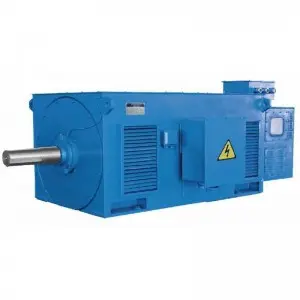3. Power factor characteristics
When the output power of an asynchronous motor changes at the rated voltage and rated frequency, the change curve of the stator power factor cosφ1=f (P2) is called the power factor characteristic. Since the total impedance obtained by the equivalent circuit of the asynchronous motor is inductive, so for the power supply, the asynchronous motor is equivalent to an inductive impedance, so its power factor is always lagging, and it must absorb inductive reactive power from the power grid. When no-load is used, the stator current I1 is basically the excitation current, which is mainly used for reactive excitation, so the power factor is very low, 0.1 to 0.2. When the load increases, the active component of the rotor current increases, and the active component of the stator current increases accordingly, which can improve the power factor. Near the rated load, the power factor reaches its maximum. Since the slip s of the motor is very small and changes very little after no-load to rated load, the rotor power factor angle almost remains unchanged. But when the load exceeds the rated value, the s value will become larger, so φ2 becomes larger, and the reactive component in the rotor power supply increases, so that the motor stator power factor drops again.
4. Electromagnetic torque characteristics
When the output power of an asynchronous motor changes at rated voltage and frequency, the change curve of electromagnetic torque T=f (P2) is called the electromagnetic torque characteristic.
Because the output power P2=T2Ω, the load of the asynchronous motor does not exceed the rated value. The rotation speed and angular velocity Ω change very little, and the no-load torque T0 can be considered to be basically unchanged, so the electromagnetic torque characteristics are approximately a straight line with a slope of .
5. efficiency characteristics
When the output power of an asynchronous motor changes at rated voltage and frequency, the efficiency change curve η = f (P2) is called the efficiency characteristic. The losses in asynchronous motors can also be divided into two parts: constant losses PFe, PΩ and variable losses PCu, Pδ. When the output power P2 increases, the variable loss increases slowly, so the efficiency increases quickly. Like the efficiency characteristics of DC motors, the efficiency of an asynchronous motor reaches its maximum value when the variable loss is equal to the constant loss. Then the load continues to increase, the variable loss increases quickly, and the efficiency will decrease. For small and medium-sized asynchronous motors, the maximum efficiency occurs at about 3/4 of the rated load. The larger the motor capacity, the higher the efficiency.
Post time: Jan-23-2024

